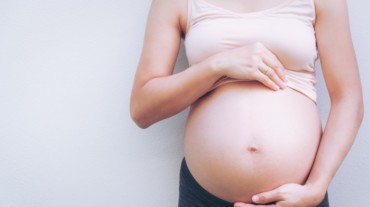Pregnancy affects your breasts, back and other parts of your body in a big way. Even your belly button changes during pregnancy. Know how that happens.
We all have a mark on our abdomen that has been visible since the umbilical chord was cut after our birth. It is called the belly button or the navel or umbilicus in the medical world. Interestingly, the belly button goes through changes when a woman gets pregnant. These changes happen mostly due to the expanding uterus and the stretching of the abdominal wall. Read on to find out how your belly button changes during pregnancy.
How does pregnancy change belly button?
While every woman’s experience can be unique, here are some ways in which pregnancy can affect the appearance of the belly button at different stages.

1. First trimester of early pregnancy
Usually, there aren’t many noticeable changes to the belly button during the first trimester of pregnancy. Since the uterus is still small during this stage and located in the pelvic region, it has little effect on the abdominal area, explains Dr Shobha Gupta, a gynaecologist.
2. The second trimester of mid-pregnancy
During the second trimester, the uterus develops and swells, pressing on the abdominal wall. The belly button may get flatter or seem more stretched out as a result of this pressure, and it may also get shallower for some women.
Also Read

3. Third trimester of late pregnancy
The uterus continues to grow throughout the later stages of pregnancy, sometimes rising to the level of the belly button or even slightly above it. In certain women, this elevated pressure might result in the belly button protruding or turning into an “outie”. Women who originally had a deeper belly button are more likely to experience it.
4. Stretch marks and skin changes
As the skin stretches to accommodate the growing baby, stretch marks may develop, including around the belly button. These marks are a result of the skin’s elasticity being tested during the rapid growth of the abdomen, says the expert.

Healthshots Inner Circle An exclusive wellness community for women
JOIN NOW
5. Postpartum changes
After childbirth, the belly button area may experience changes due to the skin stretching during pregnancy. Some women may notice loose or sagging skin around the belly button as the abdomen gradually returns to its pre-pregnancy state.
The extent of these alterations can also be influenced by factors like skin elasticity and the number of pregnancies.
Are the belly button changes during pregnancy normal?
The changes in the belly button during pregnancy are regarded as typical and are a normal component of the physiological processes that take place as the body adjusts to the growing foetus, says Dr Gupta. Nonetheless, there are situations in which consulting a doctor is appropriate. The following are some circumstances where seeing a doctor is advised –
• If you experience severe or persistent pain around the belly button or in the abdominal region, it’s important to seek medical attention.
• If you experience any unusual bleeding or discharge from the belly button should be evaluated by a healthcare professional.
• If you notice redness, swelling or signs of infection around the belly button, it’s essential to see a doctor. Infections, such as an umbilical hernia or a localised skin infection, may require medical treatment.
• If you notice a significant decrease in fetal movement or if you have concerns about your baby’s well-being, contact your doctor.
• If you experience signs of preterm labour such as regular contractions, lower back pain or a change in vaginal discharge, seek medical attention immediately.

Belly button piercing and pregnancy
If someone had a belly button piercing before pregnancy, they may need to take some extra care and precautions during the course of their pregnancy.
Here are some tips:
• Continue to clean the piercing regularly with a saline solution or a non-alcoholic antiseptic solution to prevent infection.
• As the belly expands during pregnancy, wearing tight clothing around the belly button area may irritate the piercing. Choose loose, comfortable clothing to reduce friction and pressure on the piercing.
• See if there are any signs of infection, such as discharge, redness or swelling.
• The skin around the belly button may stretch during pregnancy, and this can affect the piercing. If you notice any discomfort or stretching of the piercing, consider removing the jewellery temporarily to avoid further irritation.
• If you decide to keep the piercing in during pregnancy, opt for jewellery made of materials less likely to cause irritation. Surgical stainless steel and titanium are often good choices.
While you experience the changes, remember that maintaining proper hygiene during pregnancy, including cleaning the belly button, is important for your overall well-being.